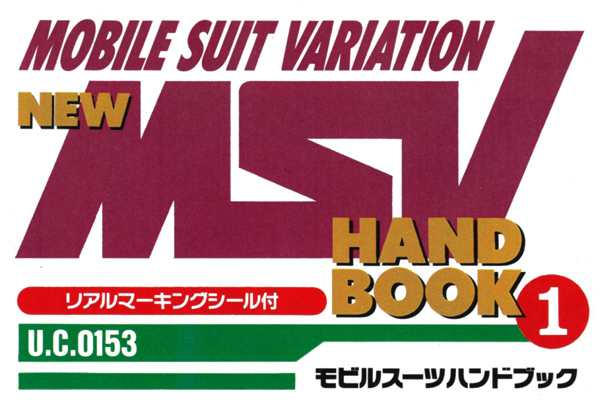AMBAC SYSTEM
The advent of high maneuverability in mobile suits is an outcome of the inception of the AMBAC system, correctly termed the Active Mass Balance Auto Control System.
This innovation is the brainchild of the development team at Zeonic, integrated into the ZI-XA3 prototype that was submitted for the final selection as the next-generation main general-purpose tactical weapon of the Principality military. With its human-like figure complete with arms and legs, the ZI-XA3 was reportedly the subject of ridicule from Supreme Commander Gihren Zabi during his inspection. However, these limbs were, in fact, the components that granted the machine its high mobility.
Conventional space fighters use vernier rockets for attitude control. In the vacuum of space, devoid of air resistance, they can’t generate reactions by transferring momentum to air molecules as aircraft do through their wings. Instead, they rotate the vehicle in any direction through the reaction force produced by the vernier thrust. However, this method consumes a considerable amount of propellant. For example, with the propellant capacity of an average space fighter of the 0070s, when the Principality military started developing its new tactical weapon, performing a 180-degree attitude control in 2.5 seconds would deplete the propellant in approximately 30 maneuvers. Increasing the amount of propellant would, in turn, increase the weight of the machine, causing a problematic rise in fuel consumption per operation. Consequently, attitude control relying on vernier rockets was far from efficient. Space combat tactics predominantly involved hit-and-run strategies, and actual space combat was considered impossible.
The AMBAC system was devised to solve this issue. Instead of relying on the reaction from vernier thrust, it changes the vehicle’s attitude by utilizing the reaction force generated by rapidly moving a substantial mass attached to the vehicle. Of course, such a concept had existed before the development of the ZI-XA3 and was already in practical use for balance adjustments in space workboats. However, to apply this as a fundamental method of attitude control, especially in massive weapons exceeding 10m, the power of the joints was entirely insufficient. The developers at Zeonic overcame this hurdle with a newly developed joint drive method called the fluid pulse system.
The ZI-XA3 was designed to move the tips of its arms with an acceleration of over 100G, allowing a 180-degree attitude change in nearly the same time—3 seconds—as the average space fighter. With such performance, the ZI-XA3 outperformed the competitor models from MIP Corporation and was selected as the Principality military’s next-generation main general-purpose tactical weapon and given the model number MS-01. The attitude control of subsequent MS models designed for space warfare is fundamentally carried out by the AMBAC system.
While the AMBAC system allowed for propellant-free attitude control, it couldn’t be wholly relied upon. Because the mobile suits arms also served to switch and operate various armaments, they couldn’t be swung around with every change in posture (the ability to operate an abundance of optional weapons was a feature of the mobile suit). Therefore, verniers were placed in various parts of the mobile suit to aid in attitude control. Their number increased towards the end of the One Year War due to advancements in engine technology, refinement of design, and establishment of mobile suit operation methods.
Additionally, the idea of performing AMBAC using specialized attachments instead of the arms and legs emerged after the One Year War. For instance, the concept of making part of the backpack movable, thereby changing the direction of the vernier nozzles (or thruster nozzles), aimed at more efficient attitude control (It has been said that the backpack of the RX-78GP01-Fb Gundam Prototype Unit 1 Full Vernian was equipped with this feature, though it has not been confirmed). The backpacks produced in this method are generally referred to as ‘binders,’ are low cost and easily exchangeable, which led to various forms from the mid-0080s onward, such as shoulder binders, wing binders, and tail stabilizers (also known as vernier stabilizers or long stabilizers). They were often semi-monocoque, equipped with AMBAC functioning limbs, verniers, propellant storage, and some even carried weapons.
The AMBAC system was also installed in units other than mobile suits, and some of the Principality’s mobile armors that were introduced in the latter part of the One Year War were successful in enhancing their mobility through this (mobile suits with body segments not found in human joints, which appeared from the 0080s onwards, can be said to be very MA-like in their use of AMBAC). Particularly, the attitude control system of the MAN-08 Elmeth incorporated a gyro for rotational stability that functioned through a reversal of the concept, allowing active attitude control by shifting its center of gravity. Roughly speaking, this can be considered a system that employed the AMBAC system in reverse.
Since the full-fledged practical application of the AMBAC system, it has continued to contribute to the improvement of mobile suit agility through refinement, new ideas, and integration with conventional methods.
As an aside, to use the AMBAC system, a specialized program is required, and it must be installed in the computer. It is virtually impossible for the pilot to handle all of the necessary limb coordination at the required speeds to appropriately change attitudes. If you were to use the AMBAC system without the assistance of a computer, even for one-direction attitude control, the pilot would have to instruct the mobile suit to perform countless actions.




